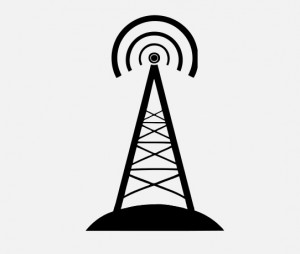 I love using my smartphone. I barely remember what life was like before I had it. Wanna watch a movie? Stream it on your phone. Is it going to rain today? Just consult your wireless oracle. Do you have a receipt you’re gonna need to submit to your company? Take a photo with your phone and email it to the office.
I love using my smartphone. I barely remember what life was like before I had it. Wanna watch a movie? Stream it on your phone. Is it going to rain today? Just consult your wireless oracle. Do you have a receipt you’re gonna need to submit to your company? Take a photo with your phone and email it to the office.
These phones make our lives easier than ever before. You really notice it when you don’t have reception.
Getting a strong, fast, steady wireless signal is essential for all of the aforementioned activities. If you don’t have any bars, you can’t use your phone to its fullest.
Communication towers, such as cellular towers, are what make this web of wireless signals possible. They’re the workhorses of our smartphone-enabled world. Without the towers, many of the innovations we enjoy today wouldn’t be possible.
The demand for more power is a constant cry as our world steadily moves towards handheld data devices like smartphones and tablet computers. In order to satisfy this demand and expand the signal’s range, we’re gonna need more towers.
That’s where Forms 620 and 621 comes into play.
What are Forms 620 and 621?
Forms 620 and 621 are the parts of an information packet that review potential impacts to historic properties as a result of communication tower construction, collocation, and modification. This packet is part of the environmental compliance process that must be completed prior to the construction of any new communication tower or collocation on an existing tower or non-tower structure.
Environmental compliance is required for communication towers under Federal Communications Commission (FCC) regulations. Because these regulations are mandated by Federal law, the towers must comply with the National Environmental Policy Act (NEPA) and a programmatic agreement mandating completion of a cultural resources review under Section 106 of the National Historic Preservation Act (NHPA). The NEPA covers not only the natural environment (stuff like endangered plants and animals), but elements of the built environment that add to our quality of life (things like historic buildings, traditional cultural properties, and archaeological sites). The FCC also has a nationwide programmatic agreement (dated September, 2004) stating that undertakings approved by the FCC will provide for a Section 106 review of effects on historic or potentially historic properties (which are defined as culturally significant districts, sites, buildings, structures, and objects).
Form 620 has to do with the impact new communication towers may have on cultural resources and historic properties. New towers add to the built environment and change the character of the landscape, which can effect historic properties. The construction process also impacts the ground surface, which has the potential to damage archaeological sites.
Form 621 is used to assess impacts caused when a company wishes to collocate antennas to an existing tower or a non-tower structure, such as a church steeple. Again, construction has the potential to damage archaeological sites. But certain change to the towers, such as increasing their height, has the potential to change the character of the surrounding environment and any nearby historic properties.
Why does this matter?
Fulfilling regulatory obligations should be a central concern for any company that builds, owns, leases, or rents communication towers. These companies directly benefit from complying with laws. As a responsible corporate citizen, they must comply with Federal laws created in order to consider impacts to the natural and human environment. Taking cultural resources into account early in the planning process is a proven means of preventing costly overages and needlessly wasting money on legal fees.
Local residents and ethnic groups may also be interested in preventing or mitigating damage to the cultural resources that are important to them. Forms 620 and 621 are one way that the government provides a means for companies to prevent inadvertent damage to cultural resources that may play an important role in the identity of local residents.
Wireless technology is extremely important for the day-to-day operation of the fast-paced world we all live in. We will only need increased signal strength as more and more people buy and use smartphones and tablet computers. The only feasible way to increase signal strength is by building more towers and improving the ones we already have. But damage to the invaluable natural or cultural resources that surround us every day must also be prevented. Forms 620 and 621 help ensure cultural resources aren’t accidentally impacted by communication tower construction.
I would really love to hear from you. If you have any questions or comments, write below or send me an email.
Learn how my résumé-writing knowledge helped four of my fellow archaeologists land cultural resources jobs in a single week!
Join the Succinct Research email list and receive additional information on the CRM and heritage conservation field.


